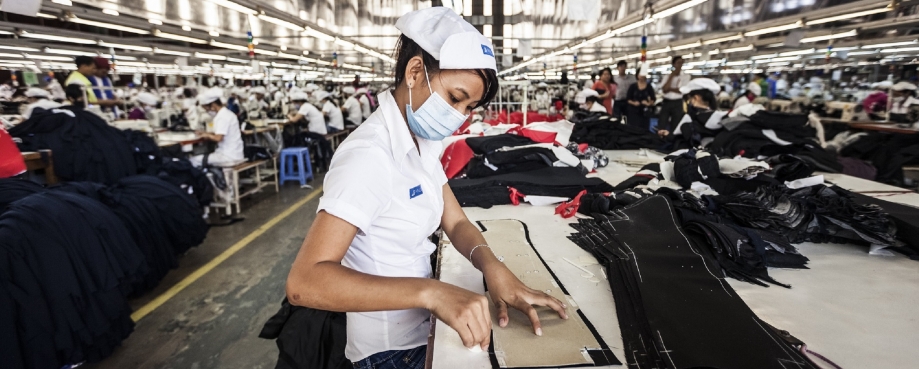
ETI’s executive director Peter McAllister reflects on transparency in business following the launch of the Transparency Pledge. This is a joint NGO and trade union initiative asking retailers to disclose the details of the factories and producers from which they source clothing and footwear.
Transparency is something of a CSR buzzword these days. But what does it mean?
Is it enough to share information about where a company sources products? Do you stop at the top of the supply chain, typically a manufacturer bringing many parts together?
Or do we need to know where every component comes from?
Or even where raw materials are sourced?
Certainly, companies are now less able to get away with hiding where their products are produced.
That’s to be commended. But, is just knowing the location of tens of thousands, or possibly hundreds of thousands of factories, farms, packing houses, fabric mills and so forth, enough?
Should transparency mean disclosing all authorised suppliers as, for example, the Transparency Pledge asks?
Without a doubt, it is essential that this is considered, as it may indeed be a positive driver of change.
But, is there more to transparency than this?
ETI argues that there must be if the aim is to make sure that what a company sells is not produced through harm or exploitation.
It’s why transparency is an issue that we have set out to scrutinise as part of our 2015-2020 strategy.
Different perspectives and expectations
Through our tripartite membership and wider outreach, ETI is well placed to address the different perspectives and expectations of retailers and brands, their suppliers, trade unions and NGOs.
We have consequently set ourselves the challenge of exploring the business case for greater transparency and accountability.
We already know that it will be much easier to make this case if the benefits to all in the supply chain can be demonstrated. Rather than just compelling companies to comply.
That’s not to say that we shouldn’t acknowledge and applaud the various efforts being made to disclose factory and other producers’ locations.
Individual companies (often ETI members) have already demonstrated leadership in taking such steps and there are initiatives lead by civil society that seek to encourage greater ethical clarity.
The Transparency Pledge is one of the latest credible and high-profile schemes.
Nevertheless, we are keen to move the debate onto the more difficult territory of how and when to disclose where standards are not being met.
For example, we want to help divulge where there are real problems, be they excessive overtime, poverty wages or cases of modern slavery.
Yet, we should acknowledge that there are challenges in this approach. Not least for workers themselves, if every time a problem is discovered, this goes directly into the public domain.
What we wish to encourage is a greater effort made by companies themselves to identify where there are risks or indeed actual cases of abuse.
When problems are discovered, or brought to the attention of a company, we want to see that the nature and scope of the problem is recorded and any action taken to provide remedy and reduce risk documented. Afterwards, at a time when this can no longer cause harm, we want to put that documentation into the public domain.
This aspect of transparency and disclosure is in line with the UNGPs and the transparency component of the Modern Slavery Act in the UK.
It should also help build a better picture of what is happening and encourage good practice in discovery and remediation.
But, this is a significant shift for business and should be recognised as such.
Negative comment and media attention
Typically, any company caught with a problem – or which raises a problem themselves – is likely to receive negative comment and possibly critical media attention.
That might be the right reaction if the company is failing to address an issue. But, where a company is investigating, and/or is putting in place a solution, then we need to be prepared to recognise this effort positively.
So, in a world where we know that abuses occur, and where we also see cases of action by leading businesses willing to identify and tackle problems, ETI’s latest thinking is that transparency should in particular comprise:
- Disclosure of authorised suppliers and production sites at least at the top tier - and aiming to disclose further tiers over time.
- Sharing risk assessments.
- Sharing actions and lessons learned.
As such, during 2017, we have committed to clarifying our expectations of our members and ourselves with the aim of providing a clear roadmap towards greater transparency.
And we hope to harness this to increase the effectiveness of our members’ efforts to ensure that the highest standards are being met in their supply chains.
For more information about our commitment to accountability and transparency read our current strategy or visit our accountability web page.
